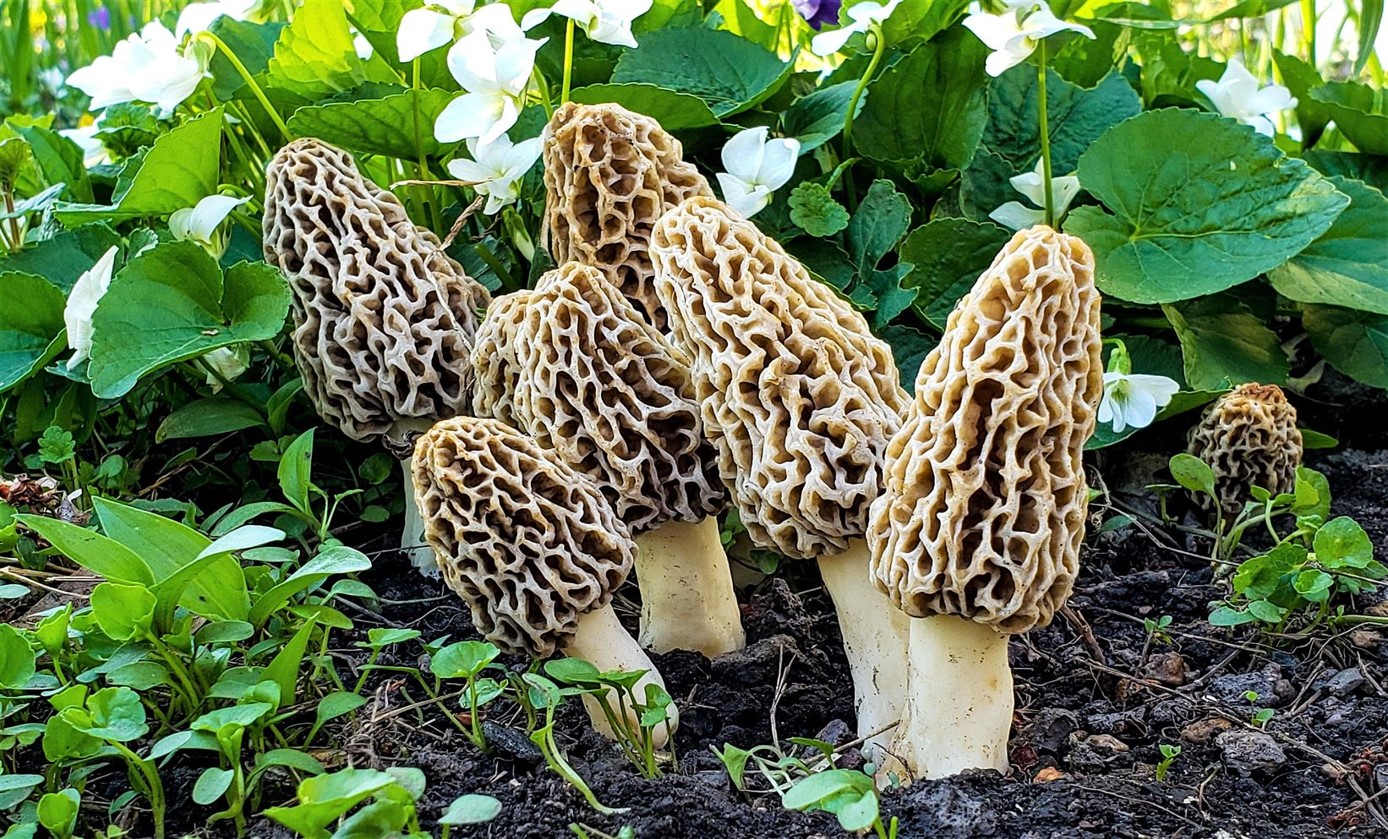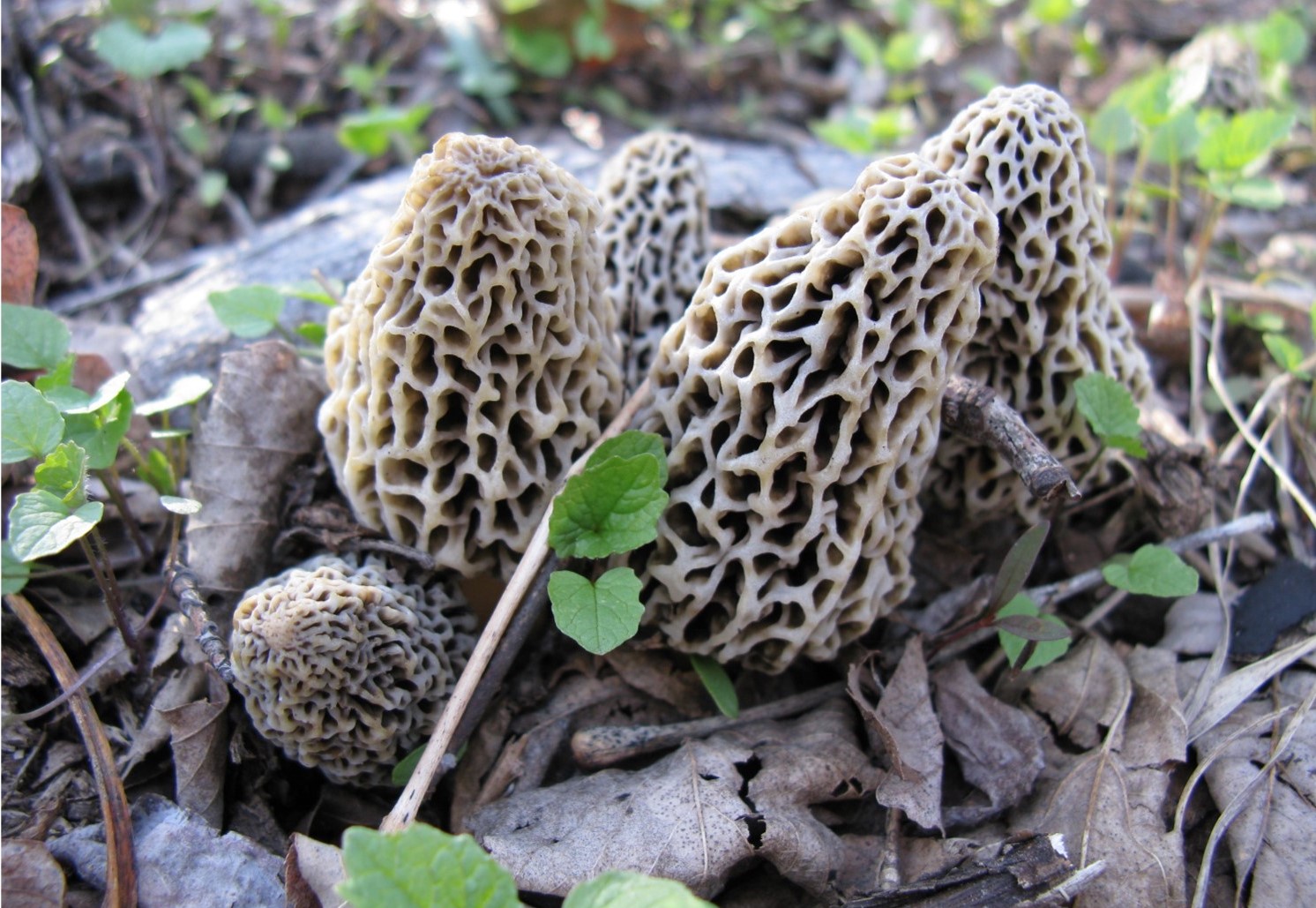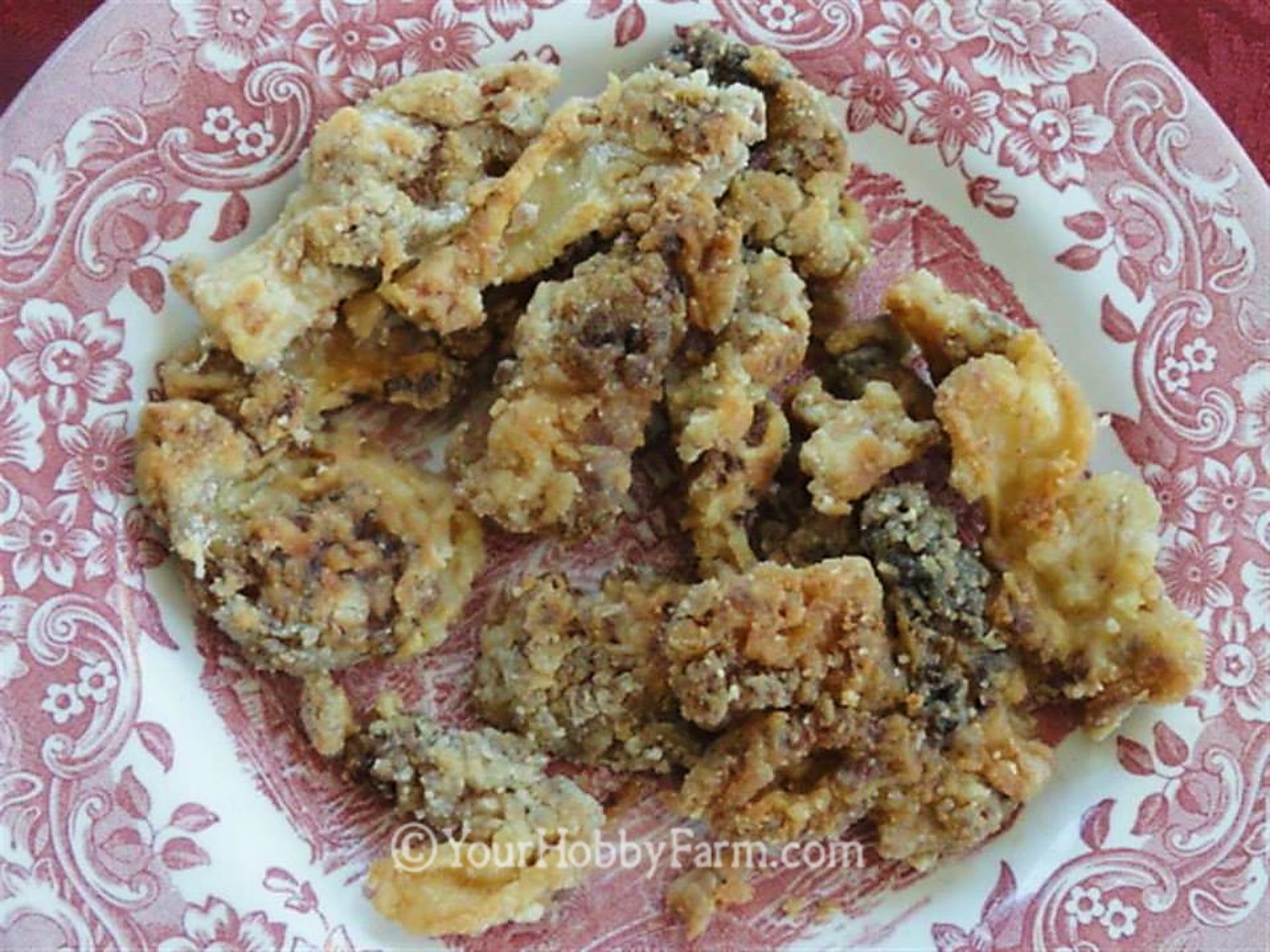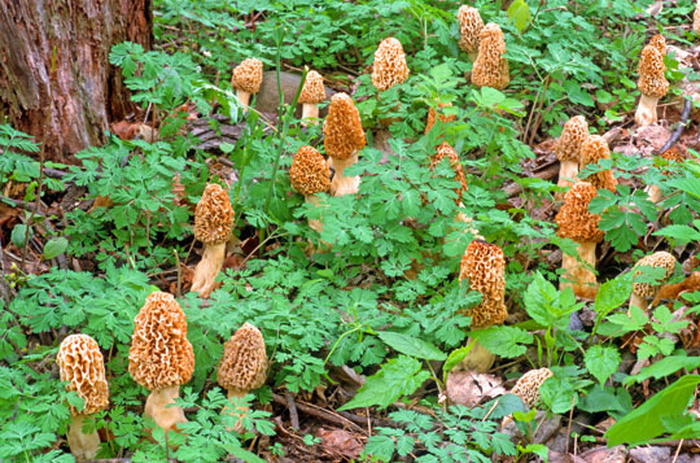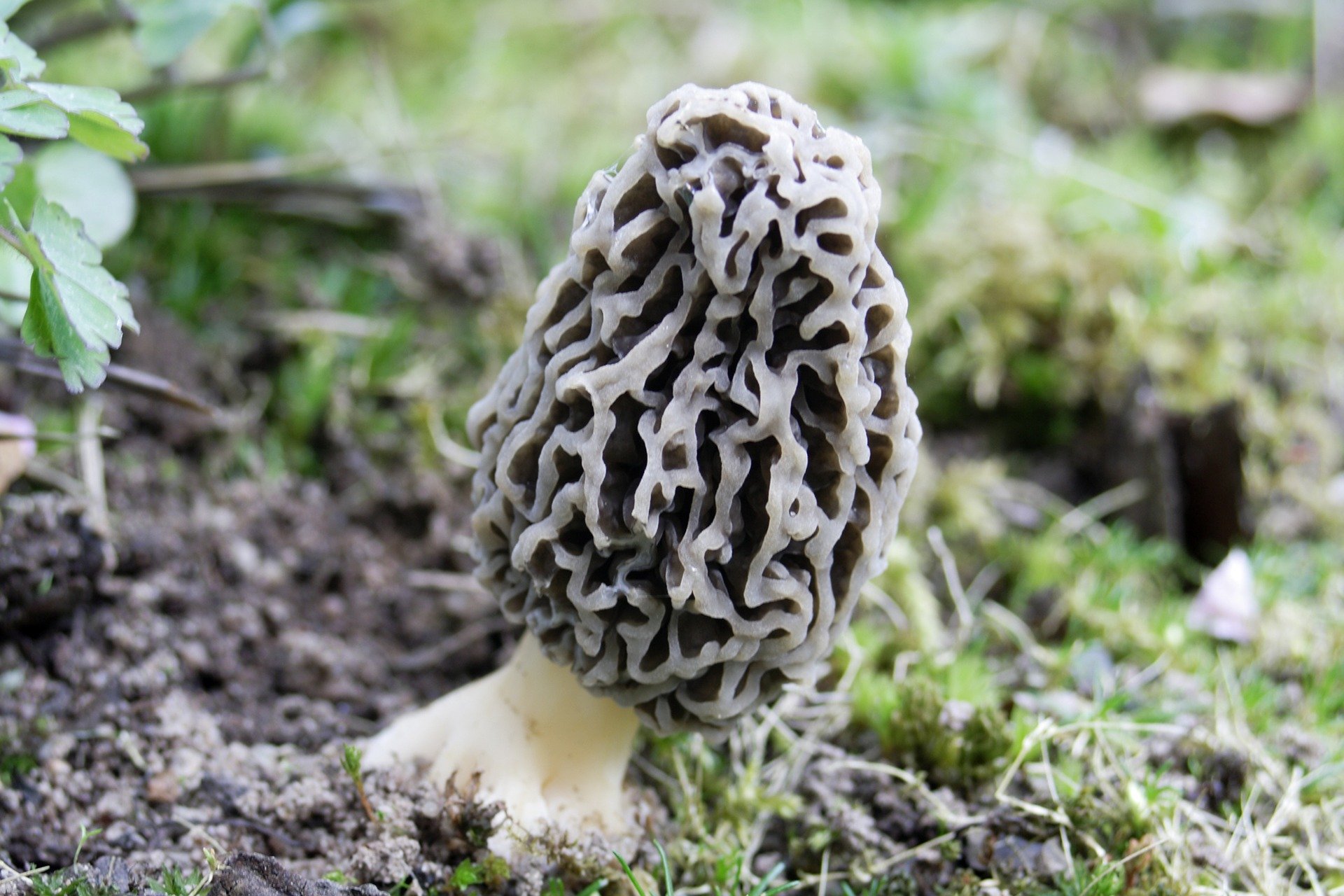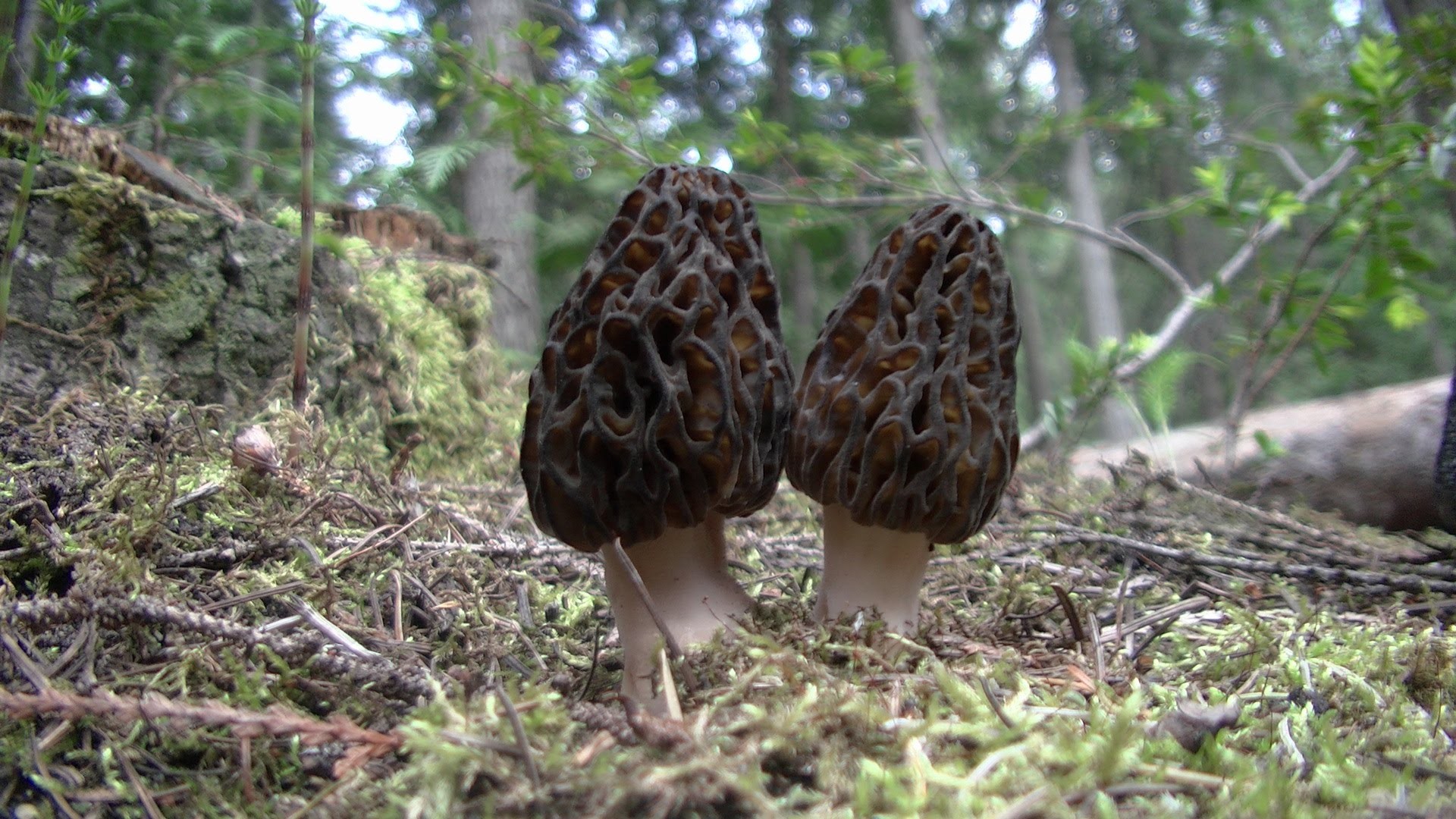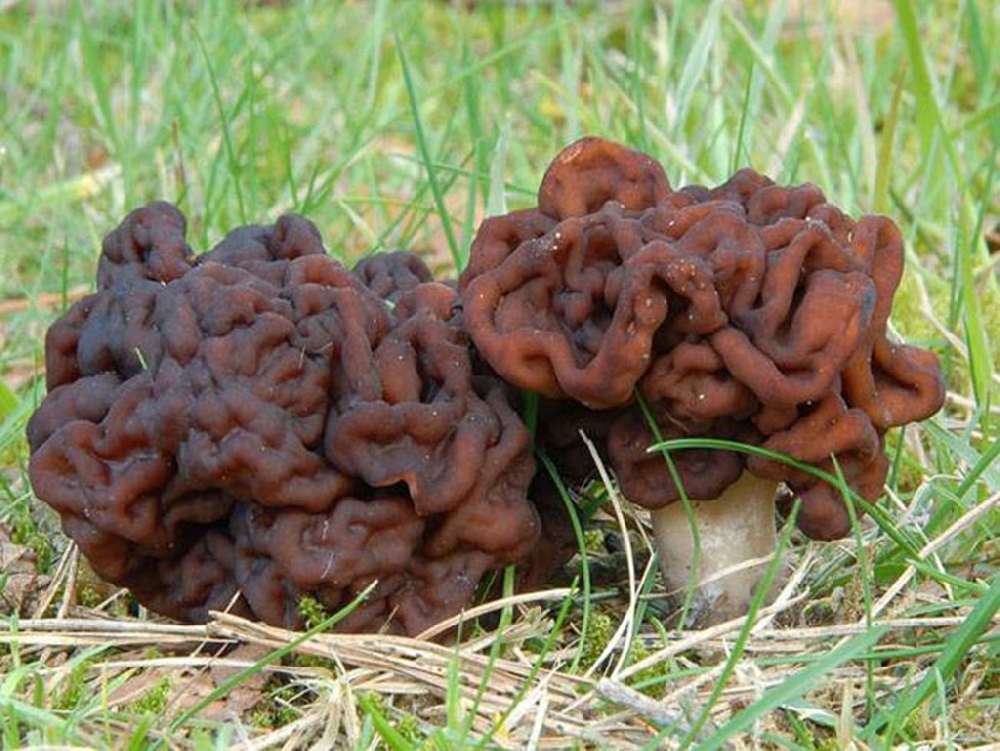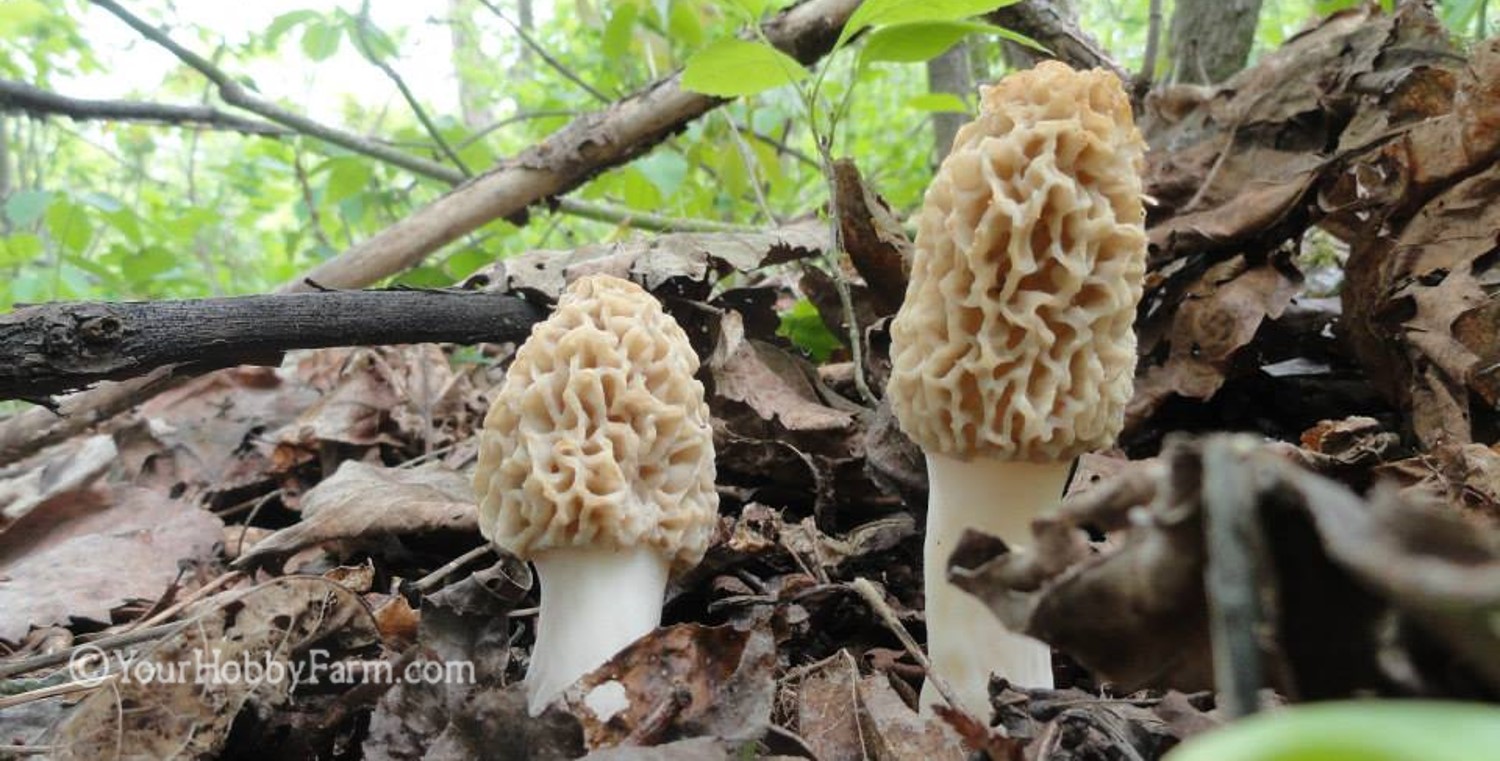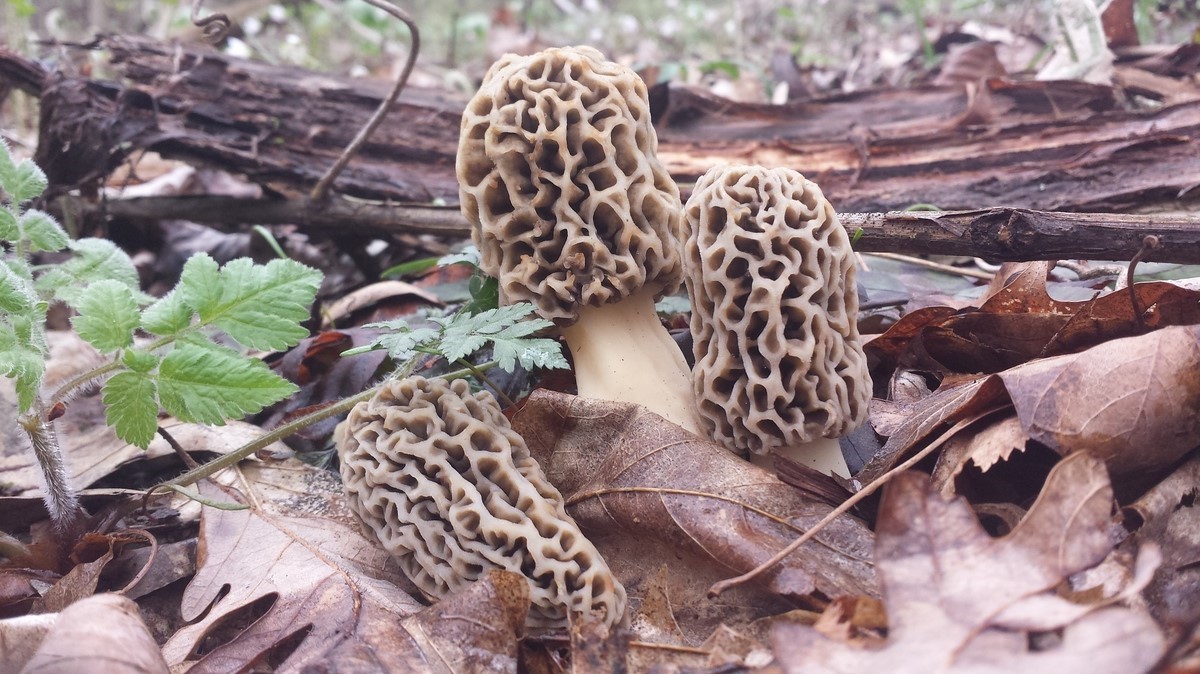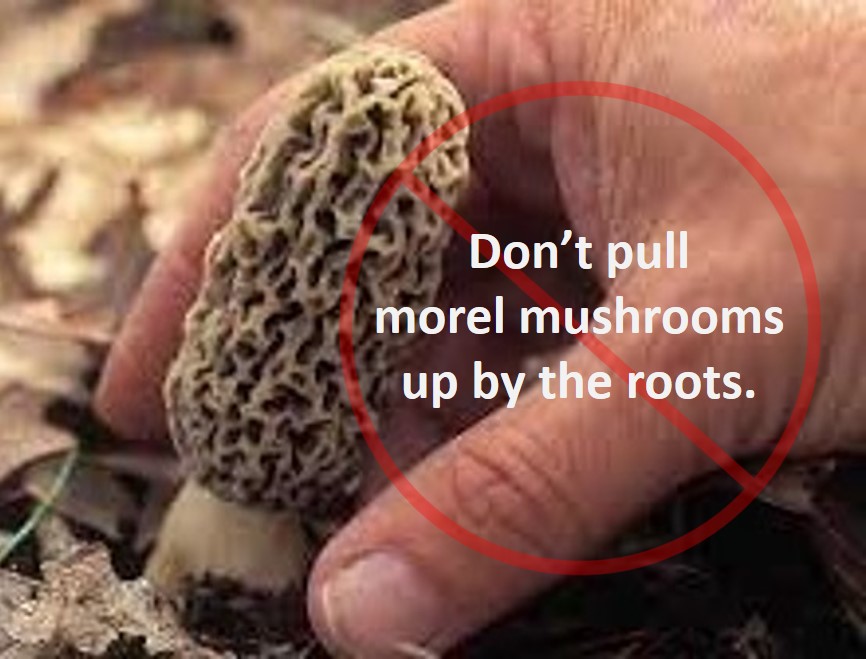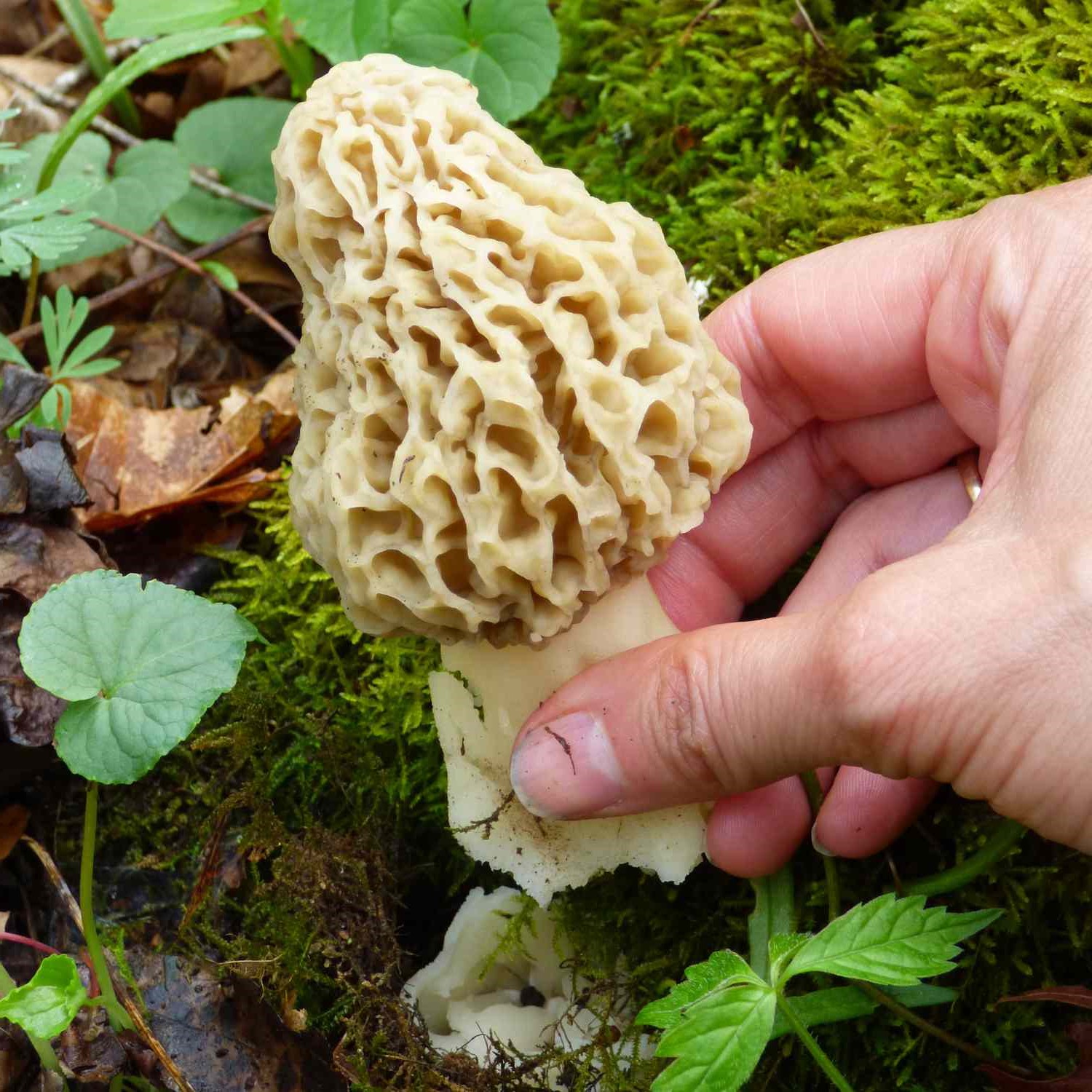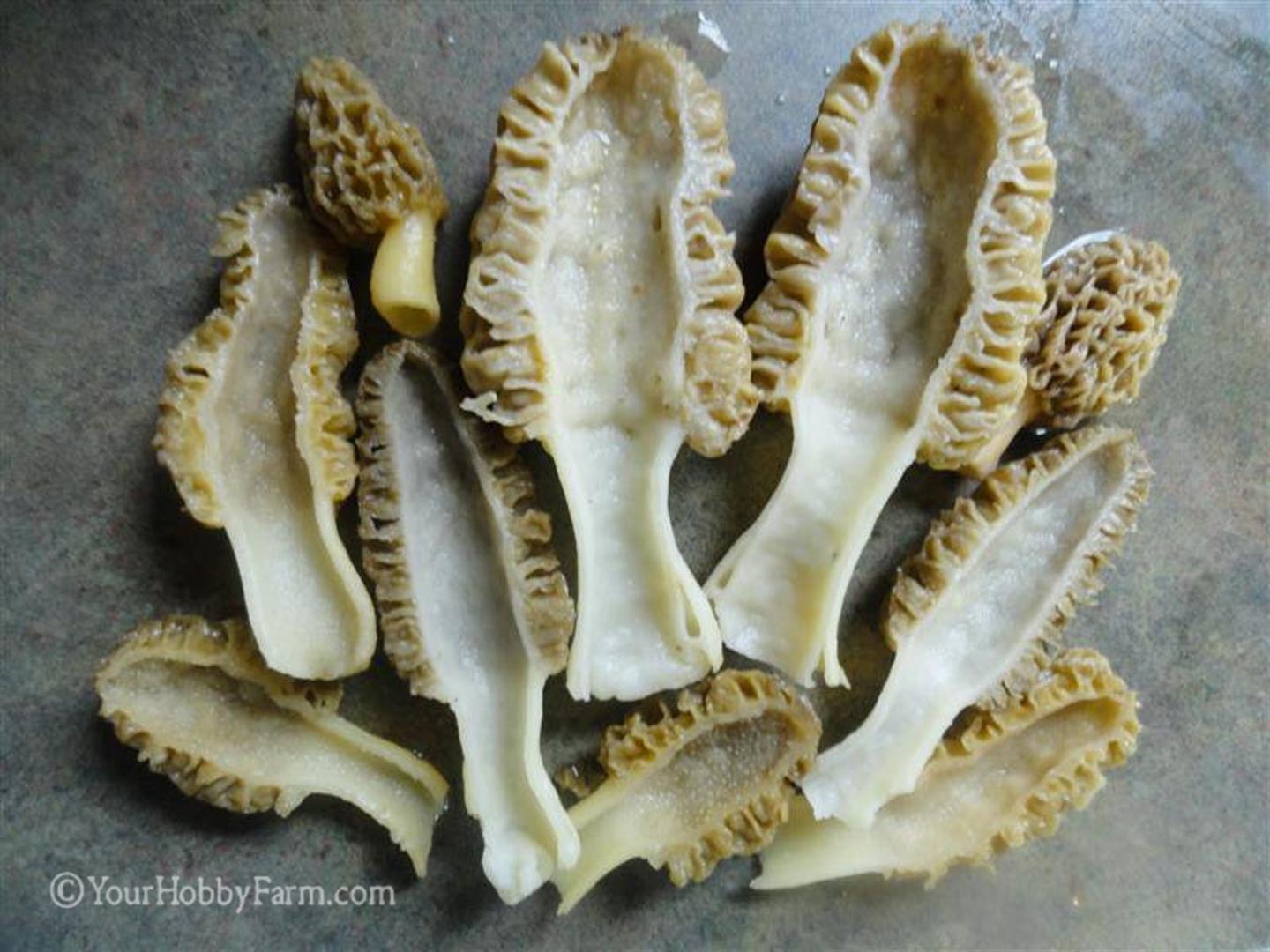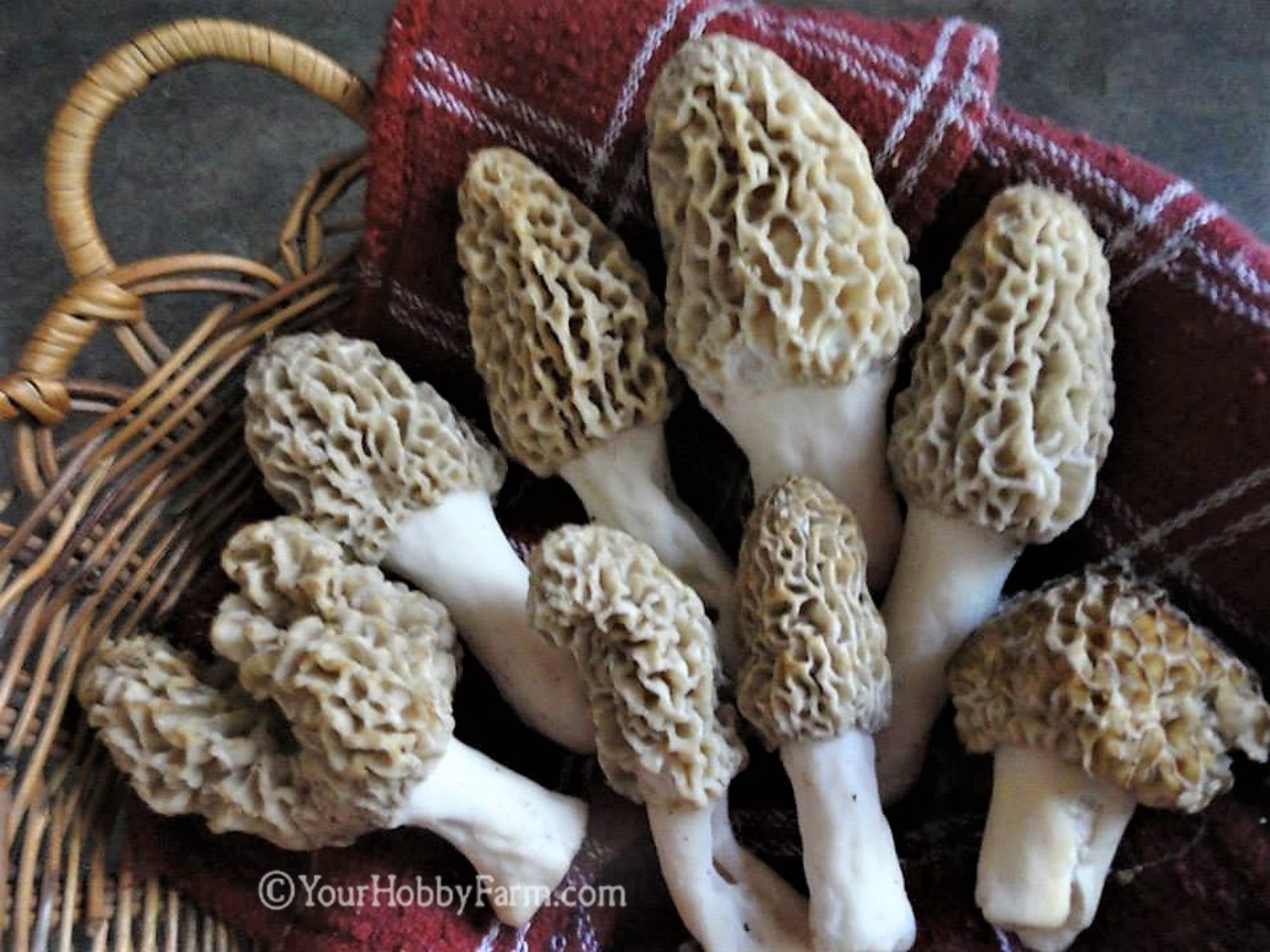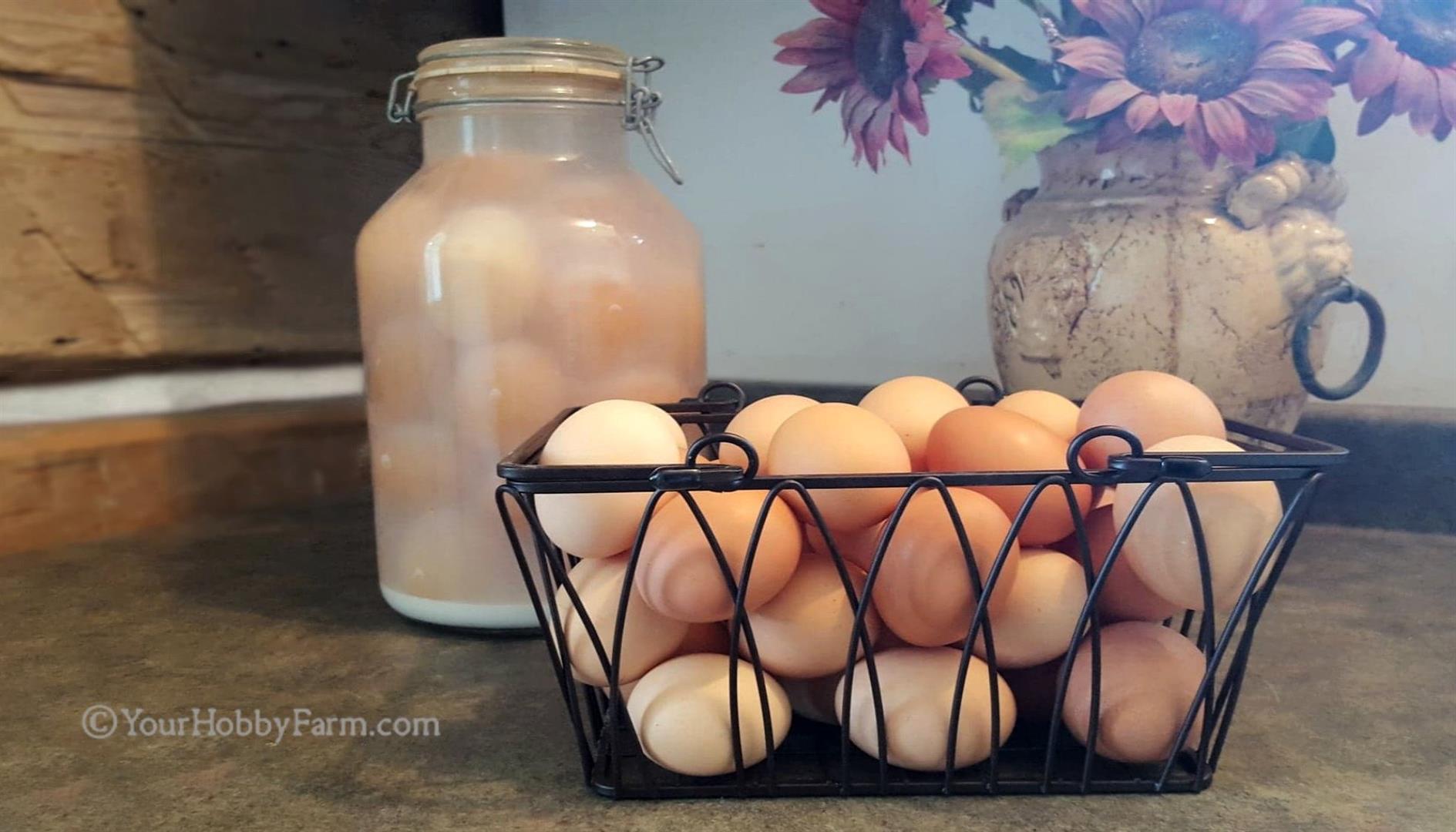Foraging for Morel Mushrooms
For those who don't know what morel mushrooms are, they can look rather odd and perhaps even a bit scary! You may wonder if you dare to touch them! But for many of us, foraging for morels is a springtime adventure that we very much look forward to! Nestled among the dead leaves and new greenery in the fields and forests is one of the most valued delicacies of springtime. As these unique fungi push their way up through the soil, they draw many wild food enthusiasts to hike for miles in search of these elusive, strange-looking, delicious treasures.
What Are Morel Mushrooms?
True morel mushrooms, Morchella, are edible sac fungi with a distinctive honeycomb appearance due to the network of ridges with pits composing their caps. This unique looking mushroom has a cone-shaped cap and sponge-like texture with a smooth, light-colored stem. True morel mushrooms are always hollow on the inside, from the top of their cap through the stem to their rooted base at the bottom.
They typically grow between two and four inches tall, but can be much shorter or much taller.
Someone once suggested that morels are the "crown jewel" of the springtime forest. They're like tiny towering turrets, ruling over the rest of their soil subjects. There's something mysterious and almost revered about these elusive morel mushrooms.
I think that it's safe to say that morels are among the best-known and best-loved among wild mushrooms. These humble Morchellas are highly esteemed celebrities among the fungi of the wild food world because they're so delicious, so exotic looking, so challenging to find, and so expensive to buy.
What Do Morel Mushrooms Taste Like?
I'm not sure what brings more joy, finding morels or eating them! Morel mushrooms are extraordinarily delicious. Unlike the slimier consistency of other mushrooms, the morels' somewhat unique texture is neither chewy nor squishy. Eaten cooked, morel mushrooms are slightly meaty and tender with a deep, nutty, and woodsy flavor. Morels are prized by gourmet cooks! But both French cuisine chefs and backwoods folk alike treasure their mild, earthy deliciousness.
Morels are considered 'top-tier' mushrooms and are often reserved for fine dining with fancy wine and delectable meat dishes, pairing nicely with steak and red wine. They're great for vegetarians as well.
Morel mushrooms may be enjoyed by fancy, 'highfalutin folks', but when you bring home these elusive treasures, they may taste even better simply dredged in salted flour and fried in a pan of bubbling butter until deeply golden and crisp on the outside.
It's important to remember that you should not eat morel mushrooms raw. This is because even true morel mushrooms contain a mildly toxic substance which is destroyed in cooking.
How to Identify Morel Mushrooms
First of all, if you're new to morel mushroom identification or need a refresher, please carefully study these Pictures of Morels to familiarize yourself with what they look like.
As for the morel mushroom description, they are unique looking and unlike most other mushrooms. Morel mushrooms are known by some as sponge mushrooms.
These distinctive fungi have a honeycomb appearance due to the network of ridges with pits composing their caps. They can also look similar to a pinecone. The top can be rounded or more elongated and pointed.
Their sizes vary from small to large. One very important characteristic of true morels is that they're completely hollow inside when cut from top to bottom.
Morel mushrooms don't have gills or pores, but instead they have spore-producing sacs along the insides of its pits or wrinkles in its bulbous top part, or cap. Their hollow stems can be leggy or stout, often light in color.
It's unknown exactly how many species of morel mushrooms there are but generally they'll be characterized as yellow morels (Morchella esculenta), black morels (Morchella elata), or half-free morels (Morchella semilibera).
Yellow morel caps are pale brownish cream, yellow to tan, or pale brown to grayish brown.
Half-free morels (Morchella semilibera) and Black morels (Morchella elata), if you're able to find any, are likely to appear first, followed by the yellows.
Black morels make their appearance around the time of the first ramps, when the trout lilies and trillium start to bloom, the maples begin to leaf out and the black flies begin to bite. Some say to look for black morels near big, mature poplar trees. Three weeks later, you'll begin seeing yellow morels.
For new hunters, it's an excellent idea to have an experienced morel hunter go with you as a coach and check the first mushrooms that you find. Morel mushrooms mentors can provide great tips for finding morel mushrooms. They're a wealth of knowledge and may save you from serious or even deadly illness.
True Morel Mushrooms vs False Morels
Always hunt mushrooms wisely, like your life depends on it, because it does! False morel mushrooms are toxic mushrooms. Check out our False Morel Mushrooms page for a lot of interesting info!
Never take any chances with toxic mushrooms! Do not touch any mushroom that you're not 100% sure about. It's simply NOT worth it!
You can see that these two types of mushrooms look different from one another. False morels tend to be more reddish, purply, or brown, in contrast to the typically tan, yellow, and grey of the true morel mushrooms. False morels are often stockier looking, without the typical honeycomb like ridges and pits on the cap.
The key indicator of a false morel mushrooms is that, when cutting it open, it is NOT hollow.
As we've said before, if you cut a true morel from the top to the bottom, there's nothing inside. You'll see that the base of the cap joins the whitish stem and the hollow of the cap runs continuously through to the bottom the stem. Inside you'll be able to detect a 'goosebumpy' texture.
A false morel has cotton-like fibers and tissue running throughout its core.
The old-timers have sayings that help us to remember important rules, “If it's not hollow, do not swallow.” and "If in doubt, throw it out!" They were dead serious about it! Eating a toxic mushroom is a deadly chance you do not want to take!
When Do Morel Mushrooms Grow?
Morel mushrooms usually appear in mid-spring. Depending on your location, they can usually be found sometime between March and June, usually lasting for 3 to 4 weeks. Southern places may start before that and farther north may be later. The exact timing depends on location and climate. Asking those in your area when they start hunting is a good idea.
Soil temps are important to morel mushrooms!
When the air temperatures reach between 60°F, around 15.5°C, and 70°F or 21°C, and the sun warms up the soil to temps above 50°F or 10°C, the soil is warm enough for you to start hunting. You can use a meat thermometer to check the temperature of the soil.
Morels don't do so well when it's dry, so sufficient rain is also important for a good crop. Under these conditions, you should see the mushrooms begin to pop up within a couple days.
The black morels will start popping up when the dandelion greens start to emerge and you see the maple trees begin unfurling their leaves. The relatively unfiltered sunlight warms the earth directly. When the dandelions and purple violets begin to bloom, the gray morels are up! These are followed by the yellow morels.
Then when a number of wildflowers: trillium, phlox, trout lily, Dutchman's breeches, violets, wild strawberries and many more are in bloom, continue your hunt. These flowers, along with temperature, are indicators of when to look for morels.
Morels will begin appearing on southern facing slopes as temperatures rise, in and on the edge of forested areas. Sometimes you'll be able to find them in open grassy areas as well. As their short season progresses the different types of morels will emerge. Toward the end of the season, if you find morel mushrooms that have started to rot, mold or decompose, just leave them. They're too old to eat.
Where to Find Morel Mushrooms
Globally, morel mushrooms are grown and prized mostly in the temperate Northern Hemisphere, in particular North America, Turkey, China, the Himalayas, India, and Pakistan and Kashmir. In some of these places they can be found in abundance. These delicious mushrooms are difficult to cultivate, so commercial harvesting of wild morels has become a multimillion-dollar industry and they are very pricey.
 If you see bark falling off of a dying elm tree, look around on the
If you see bark falling off of a dying elm tree, look around on theground for morel mushrooms.
Locally, morels can be found in pastures, grassy meadows, orchards, or in and on the edge of forested areas. They seem to grow near elm, apple, ash, aspen, and oak trees, especially, it seems, if the trees are dying.
Also look around areas where the ground has been disturbed, clear cuts and wildfire burns. These circumstances can tend to encourage a boom in morel growth.
The 'burn morels' or 'fire morels' can be found for a few weeks in the spring during the first growing season following the previous summer's forest fire.
Morel mushrooms often grow in clusters or near other morels. So, if you find one morel, make sure to stay in the same area and have a careful look around. It's very likely that you'll find more than one there.
With morel mushrooms, you may just find a couple of them or a plentiful supply. Morel mushrooms may appear one year, or for many consecutive years, then, for no apparent reason, disappear.
For more morel mushroom hunting tips, check out 50 Tips to Spot Morels. And for a bit more specifics on your area, check out Regional Strategies for Morel Mushroom Hunting.
How to Find Morel Mushrooms
It takes time and experience to become an expert morel mushroom forager. Even before you go out to hunt for morels, spend a fair amount of time studying pictures of morel mushrooms online.
This will train your brain faster and will help you to recognize what you're looking for more quickly. Once you're at what seems a good foraging spot, pause and stand still frequently. Train your eyes to focus on the ground and observe the tiny details carefully.
When foraging for morel mushrooms, be very careful as you walk so that you don't step on them! They often elusively hide in plain sight! Camouflaged and blending in with their surroundings, you'll need to constantly scan the ground, looking carefully. A walking stick helps with gently lifting up dead leaves, new plants, or other debris that small mushrooms may be hidden under.
Don't give up! Remember, just because you aren't seeing them, doesn’t mean they aren’t there. We're hoping that these tips for finding morel mushrooms will shorten your learning curve.
How to Pick Morel Mushrooms
Hunting for morel mushrooms is an exciting adventure. But here are a couple of things to consider when tempted to run and snatch them up. This brings us to another of our morel mushroom hunting tips: Don't pull the morel mushrooms up by their roots. Here's why.
In the soil, just under the surface of the ground, morel mushrooms have a fragile root system.
We don't know if this has been scientifically proven, but according to many mushroom hunters, as well as the USDA Forest Service, simply pulling morel mushrooms up with the roots damages their underground parts.
Some may not agree with this, and others feel strongly about it, so our advice is that it's better to be safe than sorry. We wouldn't want to jeopardize next year's crop.
We'd recommend that you cut or snap the mushrooms near the base of the stem so as to not disturb this delicate root system.
It helps to forage with a pocket knife so that you can cut the morel mushrooms off above the ground. Keeping the pocket knife closed unless using it ensures that you won't get cut while hiking. If you don't have a pocket knife, pinch the stem very carefully and snap it off above the ground, leaving the roots undisturbed. A pair of blunt scissors to cut them off can work as well.
There is a better chance of finding morels in the same area the following year if you cut or snap their stems about half an inch above the base of the mushroom rather than pulling it out of the ground along with some of the root system.
And here's another morel mushroom hunting tip: when hunting for morels, one of the most important items you bring with you when hunting morel mushrooms is your collection bag. Paper or plastic bags are handy and inexpensive, but do not use them. Neither of these carriers allow the mushroom spores to return to their natural habitat. In plastic, they will get 'sweaty', may turn mushy, and again, the spores will be trapped inside. The paper bag will come in handy later.
Your morel mushroom hunting bag certainly doesn't have to be fancy. Use a mesh carrier or even an old wicker fishing creel basket, instead of a plastic sack or solid fabric bag.
A mesh laundry bag works great! You could even use mesh onion, fruit, or veggie bags from the grocery store. Just make sure that you don't squash them by putting too many in one bag. The mesh or wicker carrier will allow the mushrooms to breathe. And perhaps more importantly, they will allow the spores to fall out and spread as you continue your hunt for mushrooms, potentially reseeding them.
Later when you clean the morels, a paper bag is perfect for storing them in your fridge. Plastic, airtight containers are the worst for morels. Morels need circulation, otherwise they'll turn gooey and you'll never get to enjoy their delicacy.
For more helpful morel mushroom hunting tips, have a look at this link: How to find more Morels.
Some Important Morel Hunting Precautions:
Ethics, Etiquette, and Safety
Hunt Ethically: No Trespassing When Hunting Morel Mushrooms
When hunting for morel mushrooms, It's important to be aware of what is permitted in the area in which you want to forage. Regulations vary for hunting morel mushrooms on state or provincial forest land, national, state, or provincial parks, federal defense lands, and other protected areas such as ecological or special reserves and recreation areas... Our page on Morel Mushroom Hunting Precautions goes into more detail regarding this.
Even if you may not see a 'No Trespassing' or 'Private Property' sign, be careful not to trespass on private land. Always ask permission before entering First Nations reserve lands as well as private land within forested areas, including where there may be tree farm licenses, and woodlots.
What is Mushroom Hunting Etiquette?
Here's another morel mushroom hunting tip: Morel hunters take mushroom hunting etiquette seriously. You can ask for morel mushroom hunting secrets, but don’t ask a morel hunter where they go hunting for morel mushrooms.
Morel hot spots are like trade secrets. It takes a lot of time and effort to find the best morel hunting places and they can be easily over-foraged, decreasing the supply in seasons to come. So, go ahead and ask for advice but just don't ask where. For more regarding this, check out Morel Mushroom Hunting Precautions.
You Are a Guest, Be Gentle, Don't be Greedy, Don't Litter
Remember, when foraging in the wild, you're essentially helping yourself to the pantry and fridge of your wildlife neighbors. Make it your goal to leave the area in as good a condition, if not better, than it was when you arrived. Be a gentle forager on the landscape. Avoid damaging any surrounding flora and fauna. And please don't litter. Creation care is a privilege given to us by God.
Beware of Ticks...
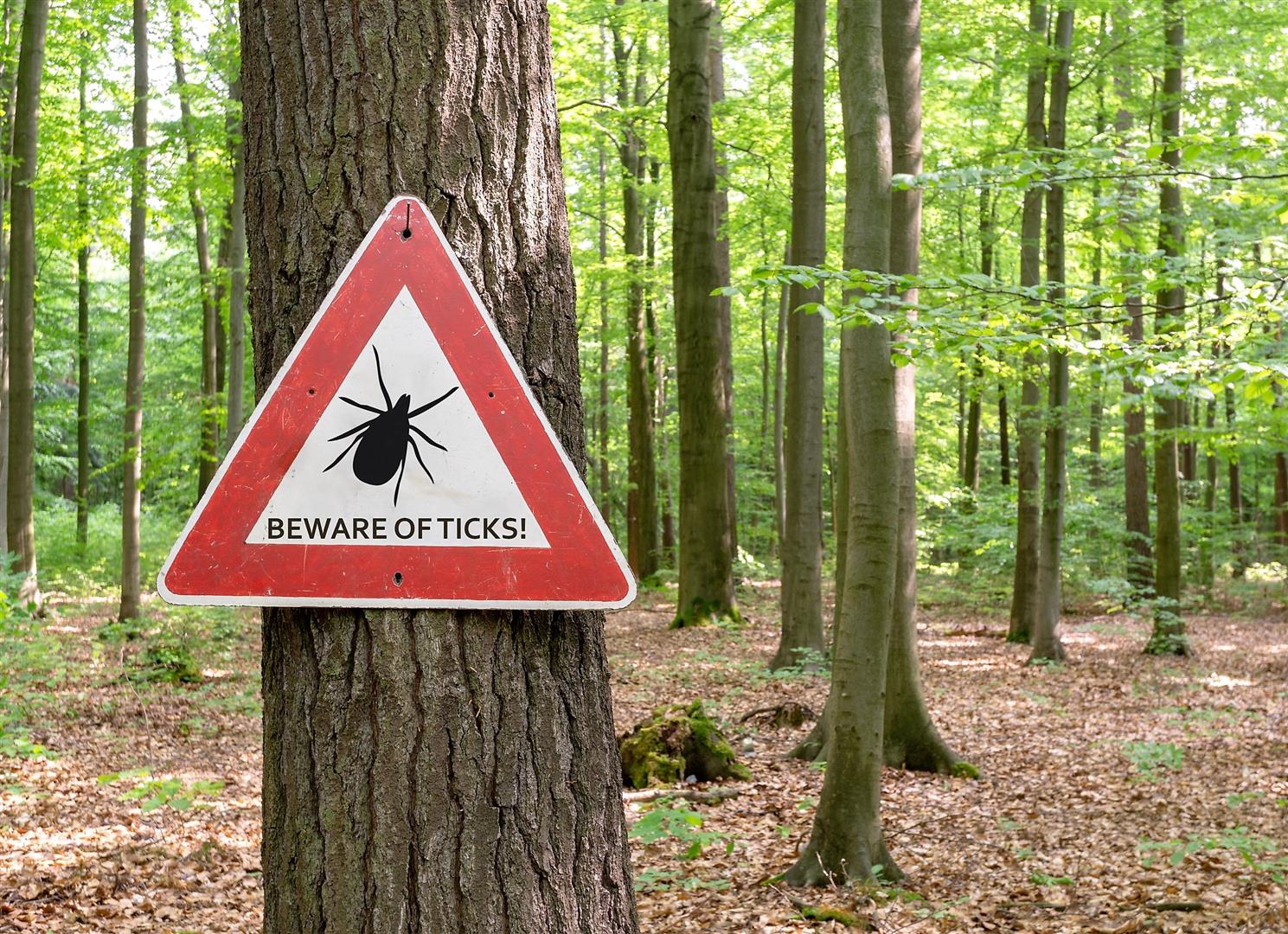
Morel mushroom season is also the time when the ticks can be plentiful in the woods. The risk of Lyme disease should be taken seriously. Dress appropriately. Always wear long pants, socks, and a sleeved shirt. Natural bug spray, DEET free, is good if you have it.
For more about ticks, have a look at these tick prevention steps to take for every hike. Also, our Morel Mushroom Hunting Precautions page covers this topic as well as several of these areas of concern.
How to Clean Morel Mushrooms
How to clean morel mushrooms? Cleaning morel mushrooms is quick and easy. First, I cut them down the center lengthwise. Remove any debris, little slugs or bugs that you may see hiding on them.
You can place your halved morels in a colander and spray them sufficiently to remove the dirt that may be lodged in the pits of the cap or on the stem. Bounce the colander a few times to remove the access water.
Or, you can place the morels in a large bowl of cold water and give them a quick swish around. The movement will help loosen any residual dirt from the mushrooms. Continue until you don't see any more dirt. But remember, the longer you expose a morel to water, the more they lose their delicate firm quality.
After cleaning them, lay them out on a towel to dry. Now they're ready for preparing a delicious dish with them or preserving them for future use.
How to Store, Cook, and Preserve Morel Mushrooms
Now that you've cleaned your morels, you may be wondering how to cook morel mushrooms! There are several ways to enjoy them!! We'd love to share some of them with you on our page, Morel Mushroom Recipes! (Page coming soon).
Storing and preserving morel mushrooms are important topics as well. If you're wondering how to preserve morel mushrooms, we invite you to check out our Preserving Morel Mushrooms page for ways to enjoy your morels longer! (Page coming soon).
Any morel mushrooms that you aren't cooking or preserving right away should be kept in a paper bag in the refrigerator for use within a few days. Do not store them in plastic as they will deteriorate.
You may also be interested in knowing about Morel Mushrooms Nutrition Facts (This will be found on the recipe page).
Happy Hunting! We hope you come upon a motherlode of morel mushrooms!
Disclaimer: This Morel Mushroom page is provided as a service to mushroom hunters. It is 100% your own responsibility to make sure that you know what you're eating. We do not take responsibility for the mushrooms that you choose to eat. Nor are we responsible for any adverse effects that may be caused by eating them.
Translate This Page!
Traduire Cette Page!
¡Traduzca Esta Pagina!



Piping Rock©
Bringing you the highest quality In hundreds of health care and life-enhancing natural products at the
lowest cost to you!
high reviews, crazy deals,
happy, healthy customers!
Click here and save today!
Business Appreciation
* This website is not affiliated with
Piping Rock

Supporting our local feed mills
Meunerie Alexandria Milling
613-525-1973
Great Products • Great Prices
Great Service
Click the pic for their
facebook page!
Meunerie Alexandria Milling
Established in 1962 by The Massie Family
Email: Alexandriamilling@hotmail.Ca
475 Massie Crescent
Alexandria, Ontario, Canada
~~~
Small Business Appreciation
* This website is not affiliated with
Meunerie Alexandria Milling

